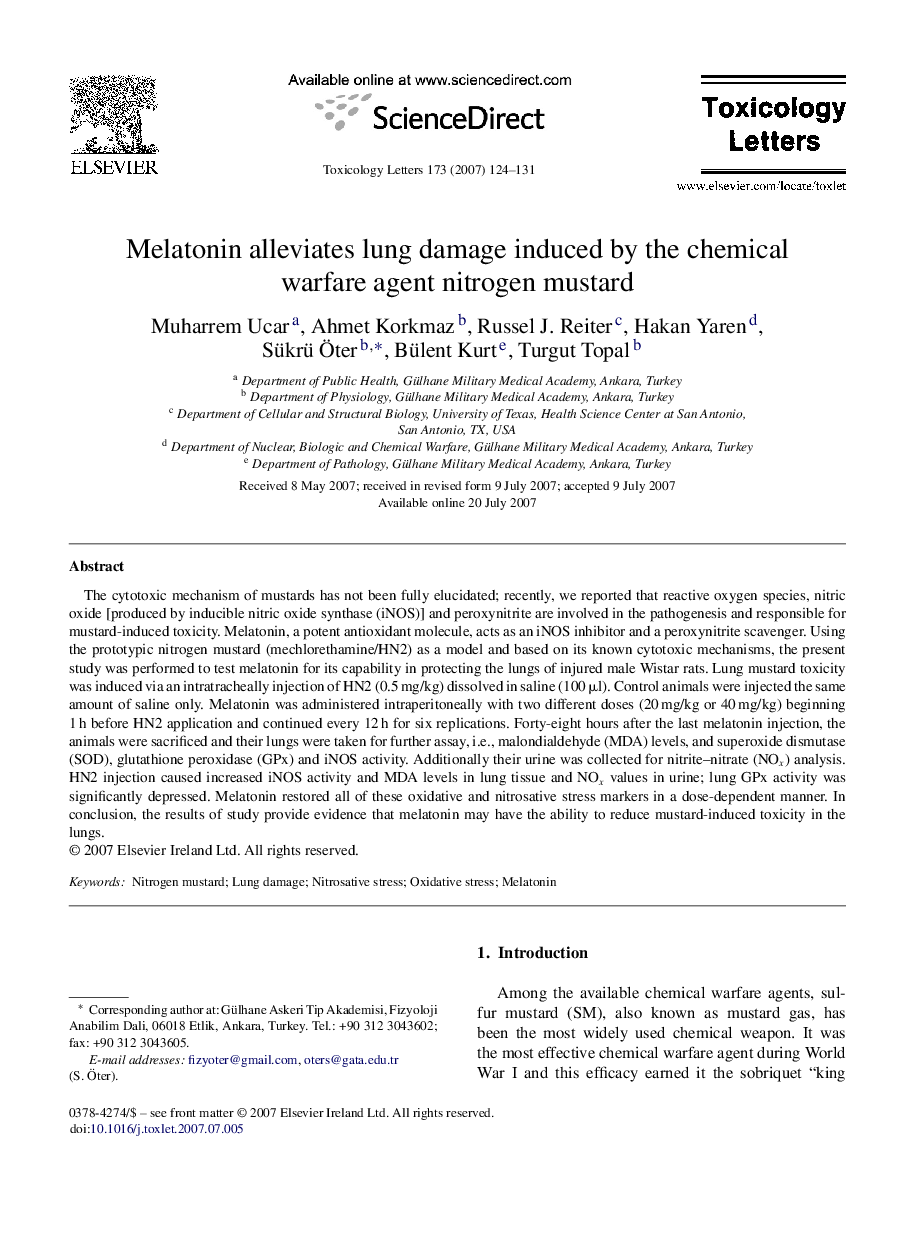| Article ID | Journal | Published Year | Pages | File Type |
|---|---|---|---|---|
| 2602159 | Toxicology Letters | 2007 | 8 Pages |
The cytotoxic mechanism of mustards has not been fully elucidated; recently, we reported that reactive oxygen species, nitric oxide [produced by inducible nitric oxide synthase (iNOS)] and peroxynitrite are involved in the pathogenesis and responsible for mustard-induced toxicity. Melatonin, a potent antioxidant molecule, acts as an iNOS inhibitor and a peroxynitrite scavenger. Using the prototypic nitrogen mustard (mechlorethamine/HN2) as a model and based on its known cytotoxic mechanisms, the present study was performed to test melatonin for its capability in protecting the lungs of injured male Wistar rats. Lung mustard toxicity was induced via an intratracheally injection of HN2 (0.5 mg/kg) dissolved in saline (100 μl). Control animals were injected the same amount of saline only. Melatonin was administered intraperitoneally with two different doses (20 mg/kg or 40 mg/kg) beginning 1 h before HN2 application and continued every 12 h for six replications. Forty-eight hours after the last melatonin injection, the animals were sacrificed and their lungs were taken for further assay, i.e., malondialdehyde (MDA) levels, and superoxide dismutase (SOD), glutathione peroxidase (GPx) and iNOS activity. Additionally their urine was collected for nitrite–nitrate (NOx) analysis. HN2 injection caused increased iNOS activity and MDA levels in lung tissue and NOx values in urine; lung GPx activity was significantly depressed. Melatonin restored all of these oxidative and nitrosative stress markers in a dose-dependent manner. In conclusion, the results of study provide evidence that melatonin may have the ability to reduce mustard-induced toxicity in the lungs.
